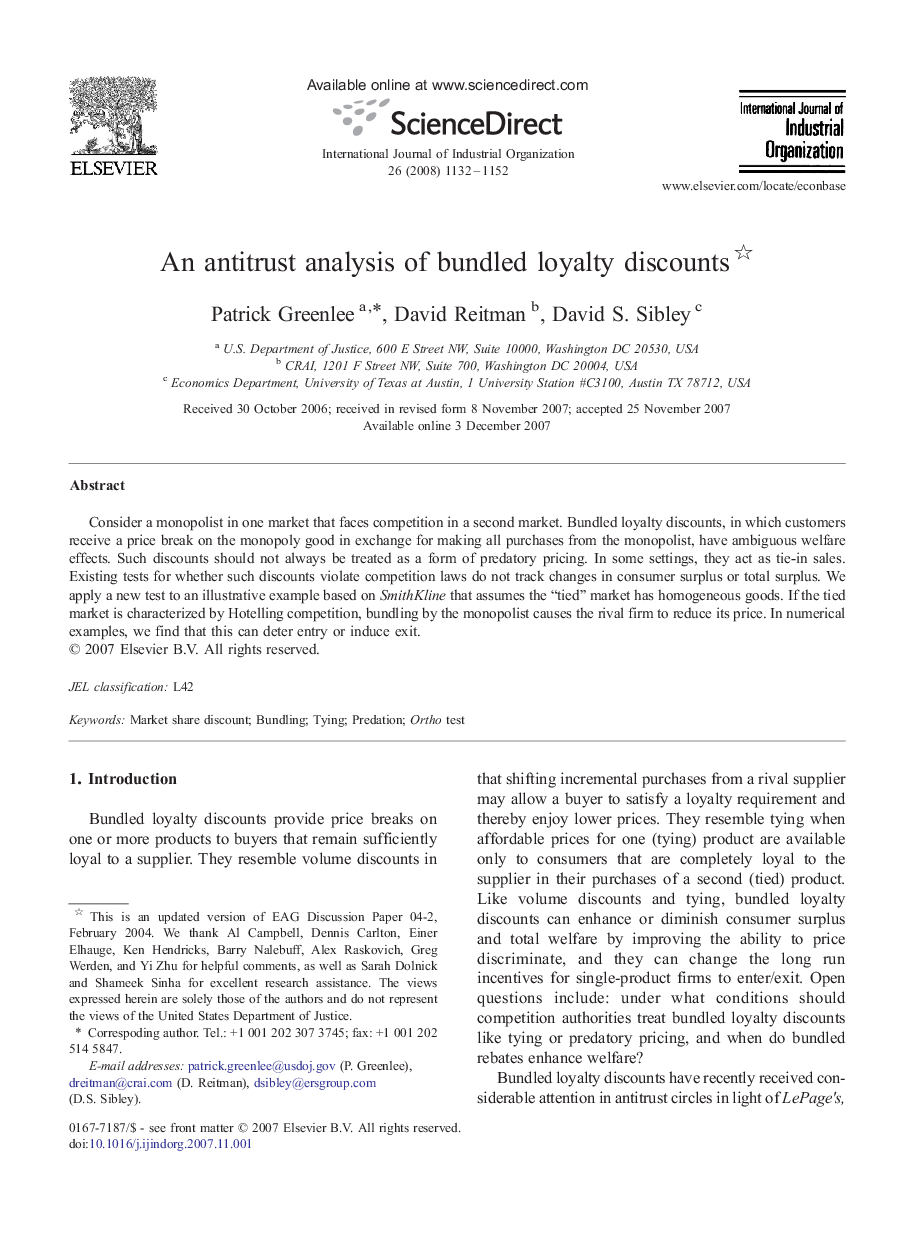| Article ID | Journal | Published Year | Pages | File Type |
|---|---|---|---|---|
| 5078488 | International Journal of Industrial Organization | 2008 | 21 Pages |
Consider a monopolist in one market that faces competition in a second market. Bundled loyalty discounts, in which customers receive a price break on the monopoly good in exchange for making all purchases from the monopolist, have ambiguous welfare effects. Such discounts should not always be treated as a form of predatory pricing. In some settings, they act as tie-in sales. Existing tests for whether such discounts violate competition laws do not track changes in consumer surplus or total surplus. We apply a new test to an illustrative example based on SmithKline that assumes the “tied” market has homogeneous goods. If the tied market is characterized by Hotelling competition, bundling by the monopolist causes the rival firm to reduce its price. In numerical examples, we find that this can deter entry or induce exit.
